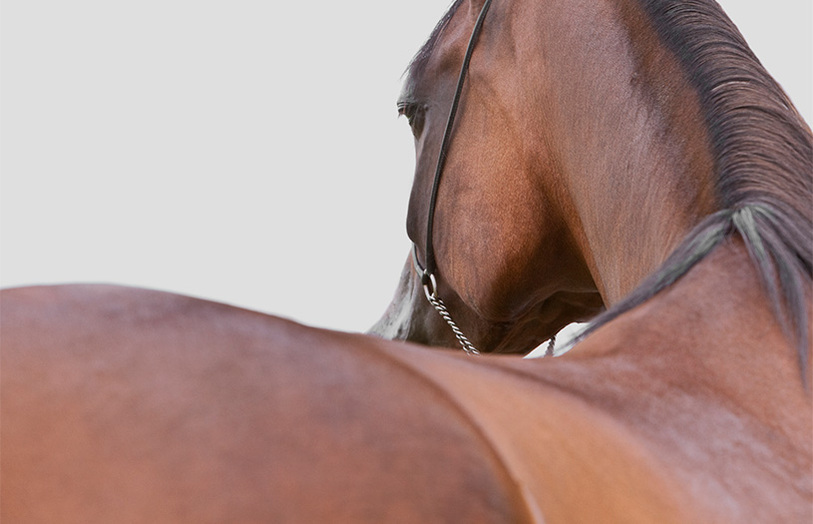
Are You & Your Horse Ready For Bitting Advice? The Steps You Need To Consider First
Equestrian Advice & Guides All Disciplines
Build your business profile for FREE and expose your services to thousands of potential clients!
Create my profile now!
In the past, a diagnosis of Kissing Spine has made the hearts of horse owners sink, as the condition has a reputation for causing serious back pain and in severe cases can lead to a horse’s behaviour becoming dangerous – sometimes permanently.
However, the good news is that Kissing Spine doesn’t always cause discomfort, and even in the event that it does, modern treatments in the form of pain management, surgery and physiotherapy can dramatically improve the condition and allow your horse to return to work happily and comfortably after a period of rehabilitation.
Overriding dorsal spinous processes (ORDSP), more commonly known as ‘Kissing Spine’, is a condition which affects the space between the vertebrae in a horse’s spine, and is one of the most common causes of equine back pain.
A horse’s spine is composed of various sections of individual vertebrae connected by ligaments and surrounded by muscle.
The different sections of a horse’s spine are;
The dorsal spinous processes are the bits on a horse’s vertebrae that stick up above the actual spine. These can be seen most obviously at the withers, where the thoracic vertebrae have larger dorsal spinous processes, creating the ridge at the base of the neck.


Kissing Spine can occur in any horse, although certain breeds - such as thoroughbreds and warmbloods – and horses of a certain age – roughly 5 to 10 years old – are most commonly diagnosed with it. The condition typically occurs in the last few thoracic vertebrae (T13 - T18) where they begin to change direction and, interestingly, where the saddle would sit.
As in the case of arthritis, the underlying cause of Kissing Spine is not yet fully understood, and it seems the condition can be brought on by a number of factors, not limited to those caused by humans. Poor confirmation – such as is seen in horses with a short or dipped back – will inevitably result in the spinous processes being closer together or slightly crowded. This won’t necessarily always lead to the development of Kissing Spine, or even pain, but it can mean that the horse’s back becomes less flexible.
Similarly, a horse’s back posture when ridden will naturally affect the distance between the spinous processes; a horse ridden correctly in a long and low outline will likely have larger gaps between them than a horse ridden incorrectly, with his head above the bit and a hollow or dipped back. Heavy work and competing in high-performance sports can also be a catalyst for Kissing Spine, as the horse’s back and spine take a lot of impact, much more so than that of a happy hacker. A poorly fitted saddle is another factor that can lead to the development of the condition, which is why regular saddle fitting is so important.

While genetic factors are also possible, none have been identified to date and an earlier onset of the condition is often down to the horse having been worked too hard whilst they were young and their body was still developing.
Depending on the severity of the condition, the signs can vary hugely. Many horses that suffer with a mild case of Kissing Spine show no symptoms at all, whereas horses with an advanced case can exhibit any number of clinical signs, such as changes in temperament and behaviour, either in an attempt to relieve the pain they are experiencing or as a reaction to it.
Some of the more common symptoms displayed by horses with Kissing Spine include;
It’s important to note that back pain doesn’t always mean a horse has Kissing Spine; a number of these symptoms can be caused by other conditions and in most cases, back pain is secondary to another problem, rather than the back itself being the primary cause for concern. For example, a lame horse may display a number of these symptoms when the actual source of the problem is within one of their limbs.
A clear diagnosis of Kissing Spine can be challenging, as it can be difficult to differentiate some of the symptoms displayed from behavioural or training issues, or unrelated medical conditions (or conditions where back pain is secondary to the cause). This means that medical professionals need to rely on a wide range of information in order to be sure they have found the root of the problem.

If a horse seems to be suffering from mild lameness in addition to showing signs of back pain or stiffness, then the cause of the lameness should be investigated first. A full clinical examination of the horse should be carried out by a veterinarian, and nerve blocks (where anaesthetic is injected into specific locations close to nerves to numb the area below the injection site) can be used to identify the location of the pain causing the lameness. If the lameness is resolved following this treatment, it is a clear indication that the discomfort in the back was secondary to the cause.
If Kissing Spine is still suspected as the cause after a full investigation of any lameness has been conducted and a detailed clinical examination has been carried out, then taking X-rays of the horse’s spine is the best way to confirm if there is a reduction in the gap between the spinous processes on the vertebrae.


Further technologies such as bone scans, ultrasound and thermography are also used to aid diagnosis, and nerve blocks to areas of the spine should be used to help confirm it.
As Kissing Spine doesn’t always cause pain or discomfort in horses, it’s important to remember that the presence of the condition does not mean it is necessarily the root cause of the problems your horse is experiencing. Roughly 35% of X-rays of horse’s spines show evidence of Kissing Spine, despite many of them not showing any symptoms. However, the greater the number of vertebrae affected and the more severe the level of change in the bones is, the more likely it is to be the source of pain. This is why the blocking of nerves in the spine is an essential step in order to determine the significance of the Kissing Spine.
It’s also possible for a horse to have pain caused by Kissing Spine as well as lameness caused by a separate issue. In these cases, the horse is likely to show some but not complete improvement under the effects of the spinal nerve blocking, and the root cause of the pain is likely to need further investigation.
While there is still no clinically approved ‘cure’ for Kissing Spine, with careful management and a tailored plan of action set out by your veterinarian, many horses can return to work after a period of rehabilitation.
In mild cases of Kissing Spine, the main aim will be to reduce pain and improve the horse’s posture and core strength. There are multiple ways to help reduce pain that can be used in combination or alone, and the method chosen will reflect the intensity of the pain, the severity of the problem and the type and level of work that is expected of the horse.
Medical treatments for pain reduction include;
Every case is different and some horses will respond better to certain types of treatment than others.
If the horse shows no sign of improvement after medical treatment, or in the case of very severe instances, then surgery may be recommended.
There are two types of surgical procedure that can be performed, both designed to widen the gaps between the spinous processes, and the most suitable method for your horse will be recommended by your veterinary team; the referring vet and the surgeon.
The two available surgical treatments for Kissing Spine are;
1. A procedure to remove parts of the spinous processes – This can be done under general anaesthetic or standing sedation and a local nerve block, however, it is considered the more costly and invasive of the two surgical treatment options and requires a much longer period of recovery.
2. An interspinous ligament desmotomy (ISLD) where the interspinous ligament (that runs between each spinous process) is cut at the affected sites to relieve the tension and create more room – This can be performed under standing sedation with a local nerve block and with this option, a horse can be back in work after as little as 6 weeks of rehabilitation.
While surgery has been shown to produce more favourable long-term results than medical treatments, surgical intervention also has the risk of destabilising the back and can lead to future lameness.
Whatever treatment option is chosen, whether medical or surgical, this will need to be combined with a programme of physiotherapy in order to strengthen the horse’s core muscles, improve their posture and teach them to carry themselves, and a rider, in a different way.
What’s involved in any one specific physical rehabilitation programme will depend on what type of medical or surgical treatment was chosen and what’s right for the horse in question. Most programmes start with gentle daily in-hand exercises in walk, which will gradually increase to trot and then canter, before finally introducing an experienced and balanced rider.
There are some other things you can do to help keep the condition at bay and ensure your horse’s recovery is as smooth as possible;

It’s also important to ensure that you, as the rider, are helping your horse by working on your own seat and balance in the saddle, to ensure you are not reteaching them bad habits and that you are an even load to carry.
Every case of Kissing Spine is different and there are, of course, some cases in which a horse may never return to anywhere near the level of work they were in prior to diagnosis. However, with the right treatment – medical or surgical – and an extensive rehabilitation plan that involves a slow and steady return to exercise, most horses that were showing clinical signs of Kissing Spine make a good recovery and will likely be able to return to work of the same intensity (or in some cases, a slightly lower level).
You will need patience, commitment and determination while in the rehabilitation stages, in order to see a successful outcome, and the horse should continue to be schooled by trainers and riders in the ways suggested above – even after the completion of the agreed rehabilitation programme – in order to keep them comfortable and manage the ongoing condition effectively.
You can find advice on how to prevent your routine becoming stale and boring, for both horse and rider, within our article 'Training Routine Changes - How To Keep It Fresh And Maintain Motivation'.
For a first hand take on the diagnosis and rehabilitation process, please see our contributor Cara Winter's three-part story, Our Kissing Spine Journey - Part 1 | Diagnosis, Part 2 | Rehab: From The Ground Up, and Part 3 | Rehab: Back In The Saddle.

